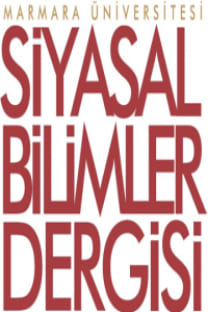AUTONOMY DESPITE RESTRICTIONS: ASYLUM SEEKERS IN ISPARTA, ISTANBUL, AND YALOVA
AUTONOMY DESPITE RESTRICTIONS: ASYLUM SEEKERS IN ISPARTA, ISTANBUL, AND YALOVA
AUTONOMY DESPITE, RESTRICTIONS,
___
- AGAMBEN, G. (1998). Homo Sacer: Sovereign power and bare life. Stanford: Stanford University Press.
- AGAMBEN, G. (2000). Means without End. Minneapolis: University of Minnesota Press.
- AGAMBEN, G. (2005). State of Exception. Chicago: University of Chicago Press.
- BIEHL, K. (2008). Governing Through Uncertainty: ‘Refugees’ in Turkey. MA Thesis submitted to Boğaziçi University, Istanbul.
- De CERTEAU, M. (1988). The Practice of Everyday Life. Translated by Steven Rendall. Berkeley and Los Angeles: University of California Press.
- FITZPATRICK, P. (2001). ‘Bare Sovereignty: Homo Sacer and the Insistence of Law.’ Theory and Event, 5(2).
- FOUCAULT, M. (1978). History of Sexuality: Volume 1: An Introduction. Translated by Robert Hurley. New York: Pantheon Books.
- FOUCAULT, M. (1995). Discipline and Punish: The Birth of the Prison. Translated by Alan Sheridan. New York: Vintage Books.
- FOUCAULT, M. (2003). Society must be defended: Lectures at the College de France, 1975-1976, M. BER- TANI and A. FONTANA (der), New York: Picador.
- LEFEBVRE, H. (1996). ‘The Right to the City’, in E. KOFMAN and E. LEBAS (der). Writings on Cities. London: Blackwell.
- OWENS, P. (2009). ‘Reclaiming ‘Bare Life’?: Against Agamben on Refugees,’ International Relations, 23(4): 567-582.
- SCHMITT, C. (2005). Political Theology: Four Chapters on the Concept of Sovereignty. Translated by George Schwab. Chicago: Chicago University Press.
- WALTERS, W. (2008). ‘Acts of Demonstration: Mapping the Territory of (Non-) Citizenship’, in E. F. IŞIN and G. M. NIELSEN (der), Acts of Citizenship. London: Zed Books.
- YIFTACHEL, O. (2009). ‘Critical theory and ‘gray space’: Mobilization of the colonized.’ City: analysis of urban trends, theory, policy, action, 13(2-3): 246-263.
- ZEMBYLAS, M. (2010). ‘Agamben’s Theory of Biopower and Immigrants/Refugees/Asylum Seekers: Discourses of Citizenship and the Implications for Curriculum Theorizing.’ Journal of Curric- ulum Theorizing, 26(2): 31-45.
- Yayın Aralığı: 2
- Başlangıç: 2013
- Yayıncı: Marmara Üniversitesi
İÇ DENETİM SİSTEMİNDE DENETÇİLERİN BAĞIMSIZLIK VE TARAFSIZLIĞININ ÖNEMİ
DEVLET KAPASİTESİ VE UMUMİ MÜFETTİŞLİKLER ALTYAPISAL İKTİDARIN YERELDE İNŞASI
Siyasal Bilimler Dergisi Toplumsal Hareketler Özel Sayısı İçin Makale Çağrısı
Siyasal Bilimler Dergisi YAYIN KURULU
Küreselleşen Dünyada Rekabet Politikası ve Gelişmekte Olan Ülkeler
The American Christian Right and George Bush's Foreign Policy Towards Sudan
Mohd AFANDISALLEH, Mohd ABU-HUSSIN, Abdul MOHAMED
AUTONOMY DESPITE RESTRICTIONS: ASYLUM SEEKERS IN ISPARTA, ISTANBUL, AND YALOVA
21. YÜZYIL RUSYA DIŞ POLİTİKA DOKTRİNLERİ’NDE GÜNEY KAFKASYA VE ORTA ASYA DEĞERLENDİRMESİ
YENİ BURJUVAZİ, EKONOMİK KALKINMA VE AFRİKA: TUSKON AFRİKA TİCARET KÖPRÜLERİ
